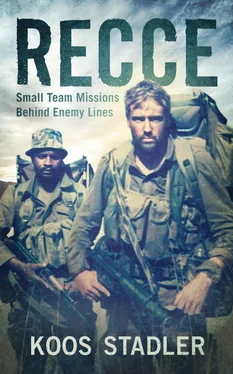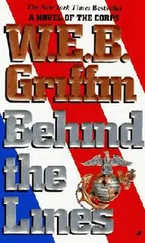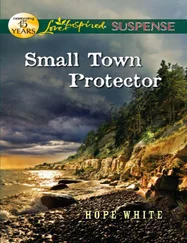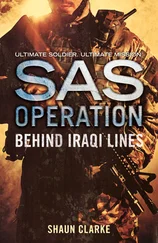The route the battalion took followed a lush green dry riverbed from Mupa towards Cuvelai. The recce wing led the way in two Buffels, [8] The Buffel was a mine-protected infantry mobility vehicle (or troop carrier) that could carry a section of ten men.
followed by one of the companies, the HQ and support vehicles and then the rest of the companies. Suddenly we heard shooting, followed by “Contact left!” over the radio.
We rushed towards the contact. By the time we arrived at the scene, at the side of the omuramba, the first recce team had already disembarked and was doing a hasty follow-up into the thick undergrowth. A single shot rang out, and I immediately thought one of our guys had been ambushed. As we closed in, we discovered a young SWAPO cadre who had shot himself in the head.
The dead cadre lay in the short grass, his clothes and kit in a sorry state. In his breast pocket was a Bible. For the first time – although I did not acknowledge it then – I was unsettled by the scene. He had clearly killed himself out of fear of what the South Africans would do to him had he been caught alive.
In those years it was still easy for me to distinguish between right and wrong. We were fighting on the side of the righteous; we were the God-fearing Gideon’s band defending our country from the threat of communism and the anti-Christ. SWAPO represented evil. They were the dark force that would bring communism and an immoral world order to South West Africa and, eventually, to South Africa. At least, this was the mould in which I had been brought up, and it was easy to believe that I was on the “right” side.
But finding a pocket Bible on a young SWAPO cadre, who had killed himself out of terror for what I, a God-fearing South African, would do to him, flipped a switch in my mind. Never again would I see the Border War, and my later operations with Special Forces, in simple black-and-white terms. From this point onwards I would also start to question the reason for many of our actions during the war.
For the next few days we steadily worked our way towards Cuvelai, sweeping wide for SWAPO deployments. Information about a large SWAPO camp that served as detachment headquarters and training base in an area about 20 km northeast of our location was confirmed and the combat group established a temporary base (TB) to prepare for an attack. The TB happened to be in the exact location of a long-abandoned SWAPO base.
During the afternoon before the day of the intended attack, one of the guys found a roughly drafted map in one of the bunkers. This depicted the layout of a minefield, with 98 antitank mines and a large number of antipersonnel mines apparently in close proximity. What made this discovery even more alarming was the fact that we found 98 dust covers for Russian TM-57 antitank mines; the dust cover has to be removed to insert the fuse into the fuse well. This meant the mines were armed.
But, for some reason, our commanding officer was not too disturbed by this information, and ordered the combat group to be ready to move out by 04:00 the following morning. We would reach the enemy base by first light and deploy for the attack as we engaged in combat – two companies in attack formation and the third in reserve. The recce wing would form the cut-off group to the side, while the HQ would remain behind the attack force, with the indirect fire support group, the 81-mm mortars, in close proximity. Four Alouette gunships would be dispatched as close air support from an HAG south of us once the attack commenced. This was not uncommon for the type of operations we were conducting, as there was no time for a pre-recce and we did not know the exact location and layout of the base.
So it happened that the two recce wing vehicles moved out at 04:00 the next morning, crossing the narrow omuramba that led out onto our route. C Company followed, with Lieutenant “Swazi” Naudé’s Buffel leading the way. Naudé, a dedicated young officer and second-in-command of C Company, had meticulously prepared his equipment for the day’s fighting.
Suddenly a loud explosion tore through the morning air, followed by a commotion among the C Company vehicles behind us. Then Swazi’s voice broke radio silence, which was supposed to be in force until the attack.
“Fokken landmine. I have just cleaned my rifle; now it’s all messed up again.”
Swazi’s Buffel had hit a landmine as it moved out on our tracks. The two recce wing vehicles must have missed it by millimetres as we passed a few minutes before. Although stunned and full of dust, Swazi and his fellow passengers had not been injured. They collected their kit and moved away from the vehicle to shelter nearby, while everyone else debussed and moved into all-round defence while the damage was assessed.
Since the vehicle had been moving into its position in the convoy at a walking pace, it had not been overturned by the powerful mine. The front left wheelbase had been ripped off, but other than that there was little damage. With a little time and innovation the “tiffies” (mechanics) could get it running again. By now everyone was thinking about the minefield on the map we had found the previous day. Captain Gunther voiced his concern over the radio, asking the OC whether he wasn’t worried about the possibility of more mines. But our combat group commander had his mind on the forthcoming attack and was adamant that we move on.
“Radio silence from now on!” he ordered over the VHF network. “No word until we hit contact. I don’t want the enemy to sit and wait for us.”
The damaged vehicle was left with a protection element until after the attack, so Swazi and his team of rattled and dusty men got onto the next C Company vehicle in the convoy.
It was daylight by the time we moved out again, the recce wing vehicles leading and Swazi trailing. I watched as Swazi and his team moved out across the omuramba, almost hesitantly, past the stricken Buffel. I was still looking when the next landmine went off. A massive dust cloud engulfed the Buffel, which was blasted onto its side this time. It all happened as if in slow motion. Fortunately everyone was ready and strapped in, and, once again, there were no injuries.
When the OC’s voice came over the radio, he made his announcement in a calm and collected voice: “Stop! All stations, stop. We are in the middle of a minefield…”
But by now Swazi was fuming. He refused to get out of the overturned vehicle until the engineers had cleared the whole area, and by the sound of it he could have killed an entire SWAPO detachment barehanded. Later, it transpired that while Swazi waited for the damage to the first vehicle to be assessed and a decision made regarding the attack, he sat under a tree and meticulously cleaned his rifle. By this time he didn’t need a radio to convey his disgust to everyone in the combat group – or any enemy who might have been listening in.
For the rest of that day everyone stayed either on his vehicle or in cover, waiting for the engineers to clear the area. By that afternoon they had lifted exactly 96 TM-57 landmines and 12 antipersonnel mines, the exact complement depicted on the map (minus the two that Swazi had detonated). The attack on the base had to be postponed for a full day while the tiffies fixed the two Buffels and the engineers ensured that we had a clear road back to the SWAPO logistics route in the main omuramba.
The attack on the detachment headquarters turned out to be a dud, as the area had been evacuated a day or two before. The combat group circled round to approach the base from the north, but as we advanced on the location, we realised that the enemy had already withdrawn. All the spoor were older than a day, and vehicle tracks indicated that their retreat might have been a hasty one.
Читать дальше












